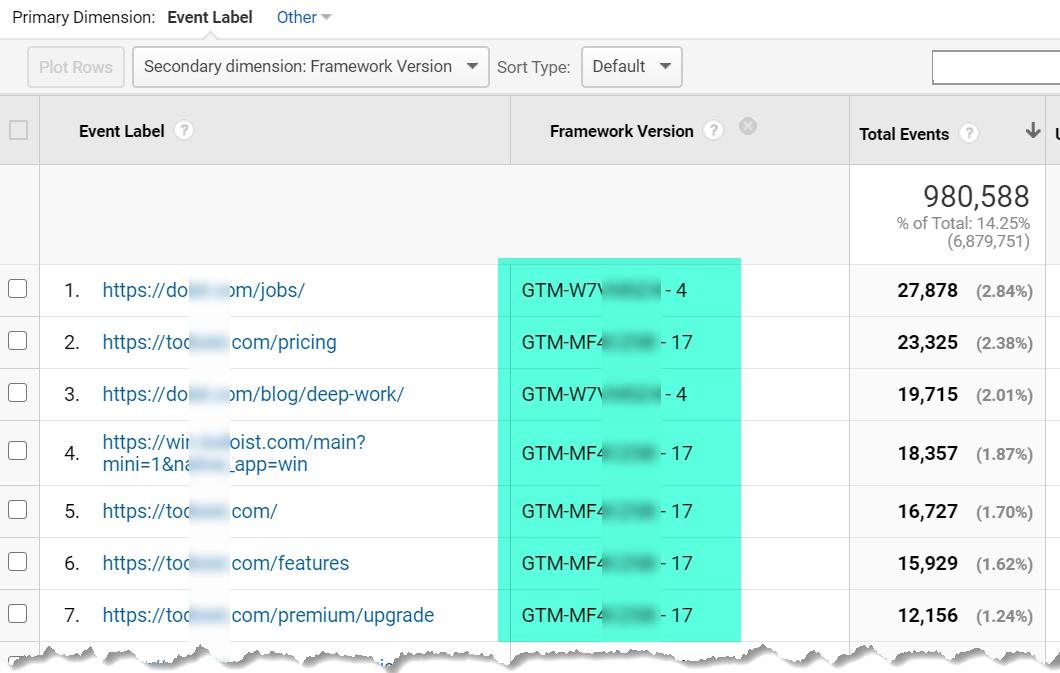Vital Knowledge: 'Secondary Dimensions' in Google Analytics Explained
Vital Knowledge: 'Secondary Dimensions' in Google Analytics Explained
Blog Article
Browsing the Depths of Secondary Measurement in Google Analytics: A Detailed Expedition on Its Performance
Second dimensions, though relatively uncomplicated at very first glimpse, harbor a wealth of untapped prospective waiting to be harnessed. As we embark on this journey to discover the nuanced functionality of secondary measurements, we will uncover just how this feature can illuminate patterns, unveil relationships, and inevitably pave the method for informed decision-making in the electronic landscape (what is a “secondary dimension” in google analytics?).
Recognizing Second Dimensions in Google Analytics

Understanding how secondary measurements work is critical for leveraging the full power of Google Analytics. By integrating key metrics with second measurements, you can obtain beneficial understandings that drive educated decision-making and optimization strategies.
Leveraging Secondary Dimensions for Data Evaluation
Building upon the fundamental understanding of just how secondary measurements improve information evaluation in Google Analytics, the application of these additional layers of information comes to be vital in drawing out valuable understandings for informed decision-making and optimization methods. By leveraging secondary measurements, analysts can dive much deeper into the efficiency metrics by adding more context to the key measurements, hence discovering surprise patterns and correlations that could not appear at very first glimpse. This much deeper level of analysis enables companies to much better comprehend individual behavior, determine trends, and pinpoint areas for renovation.
In addition, second measurements provide a more thorough sight of the data, enabling for segmentation based upon numerous criteria such as demographics, gadgets, traffic resources, and a lot more. This division promotes an extra granular evaluation, allowing companies to tailor their projects and approaches to particular target market sectors for boosted targeting and customization. Basically, the calculated use secondary dimensions equips companies to make data-driven decisions that drive growth and success in the electronic landscape.
Advanced Techniques for Secondary Measurement Execution
Checking out detailed approaches to harness the full potential of additional dimensions in Google Analytics elevates the deepness and refinement of information evaluation for strategic decision-making. One advanced method for implementing second measurements is making use of custom dimensions. By specifying personalized measurements, individuals can sector information further to obtain more certain understandings into customer habits, such as tracking communications with certain aspects on a web page or checking the efficiency of a particular marketing campaign. Another innovative method is the use of regex (routine expressions) within additional dimensions. Regex allows for more versatile and powerful pattern matching, allowing customers to create complex filters for information my company evaluation. In addition, incorporating second measurements with sophisticated sections can offer a lot more granular insights by applying several layers of segmentation to the data. This approach enables a much deeper understanding of user behavior based upon numerous criteria at the same time. Applying these innovative techniques for secondary measurements in Google Analytics equips users to conduct extra sophisticated analysis and make data-driven choices with accuracy.
Interpreting Insights With Second Measurements

When analyzing insights via additional dimensions, it is vital to consider the context of the information and exactly how different dimensions interact with each various other. As an example, understanding which certain website traffic resources lead to greater conversion rates or identifying which tools customers favor for making purchases can provide actionable understandings for enhancing advertising and marketing campaigns and boosting overall website efficiency. By very carefully examining the information with additional measurements in mind, businesses can make enlightened decisions that drive purposeful outcomes and enhance their digital existence.
Optimizing Efficiency With Secondary Dimensions

One essential way to maximize performance with additional dimensions is by segmenting data a lot more granularly. This allows you to isolate specific factors that may be affecting your metrics and obtain a far better understanding of what drives success or failure in your digital initiatives. By incorporating second dimensions such as 'gadget category' and 'landing web page,' you can identify which gadget kinds are most reliable for particular landing web pages, allowing you to customize your techniques accordingly.
Moreover, utilizing additional measurements can aid you recognize fads, patterns, and correlations that might not be noticeable when examining information with main measurements alone. This deeper level of analysis can lead to even more enlightened decision-making and eventually improve the general performance of your web site or digital marketing projects.
Final Thought
To conclude, second measurements in Google Analytics play an important duty in boosting data analysis and giving much deeper insights right into site performance. By making use of innovative methods and interpreting the data properly, companies can optimize their methods and boost helpful site overall performance. Understanding the capability of secondary dimensions is necessary for making informed choices and driving success in the electronic landscape.
By leveraging second measurements, experts can delve deeper right into the performance metrics by including more context to the main measurements, therefore discovering hidden patterns and connections that may not be noticeable at initial look. One innovative method for executing secondary measurements is the use of custom measurements.Having understood innovative techniques like custom-made measurements and regex for additional dimension implementation in Google Analytics, the following essential action is interpreting the valuable insights acquired with these advanced information division methods. Translating understandings via additional measurements involves evaluating the connections in between the second and primary dimensions selected, revealing patterns, fads, and relationships that may not be promptly evident when looking at the data in its totality.When interpreting insights with second dimensions, it is important to take into consideration the context of the information and just how different dimensions communicate with each various other.
Report this page